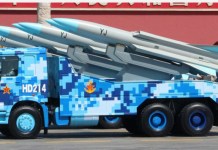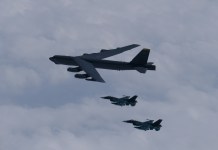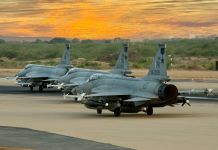The US-origin Army Tactical Missile System (ATACMS) continues to haunt the Russian military. Earlier, Ukraine requested permission from the U.S. to deploy ATACMS missiles against targets in Russia’s Kursk Oblast to strengthen its control over the recently seized territory.
However, the United States refused to approve the use of ATACMS in the Kursk region. Unnamed officials informed CNN that the US was withholding authorization not due to concerns over possible escalation but for strategic reasons related to the limited supply of these long-range weapons. The US has opted to prioritize their use in Crimea over strikes in Kursk Oblast. This decision aims to maximize the impact of the limited ATACMS missiles.
According to US officials, Crimea – which continues to be a major theater of operation in the conflict – would be a better region to use the ATACMS’s long-range capabilities. Crimea has been a strategic and symbolic target for Ukraine, making it a priority for the deployment of advanced weaponry.
Interestingly, while the ATACMS continues to keep Russia on edge, Turkey is currently testing a long-range missile with a name similar to the ATACMS, yet with a completely different role and mission.

Turkey’s Long-Range ATMACA Is Coming
On August 18, Turkish company Roketsan declared that it had successfully conducted a test launch of its long-range cruise missile variant of its ATMACA anti-ship missile.
ATMACA (Hawk) is an anti-ship cruise missile with extended range, precision attack capability, and all-weather capability. The land-based Atmaca is a longer-range variant of the same missile, featuring improved accuracy.
In the video shared by the Turkish manufacturer, the latest test launch shows the missile being prepared for launch from a mobile launcher at what seems to be the company’s test site located on the Sinop peninsula along Turkey’s Black Sea coast. Significantly, the missile was observed hitting a target on a floating platform at an undisclosed distance from its launching site.
The missile is seen with a new identification: the ATMACA UM, with the suffix UM standing for long-range. Earlier, the projectile was known as the ATMACA Kara (land) variant of the ATMACA anti-ship missile in use by the Turkish Navy. The recent test was characterized as the missile’s longest-range and longest-duration flight test so far.
Kara Atmaca Uzun Menzil uçtu! 🦅
ATMACA UM atışlı test faaliyetinde hedefini tam isabet vurarak, en uzun menzilli ve en uzun süreli uçuşunu gerçekleştirdi! 🎯
Ülkemize ve aziz milletimize hayırlı olsun! 🇹🇷@SavunmaSanayii#YarınİçinYüksel 🚀#Roketsan pic.twitter.com/3A1LHx1IW4
— ROKETSAN (@roketsan) August 18, 2024
Roketsan had test-fired the land-based variant of the ATMACA anti-ship missile for the first time in July 2022.
Haluk Görgün, the head of the Presidency of Defense Industries (SSB), said, “During its most recent test, Kara ATMACA, powered by the KTJ3700 engine, successfully hit its target with pinpoint accuracy and completed its longest flight to date.”
According to Görgün, the missile is designed for use against important land targets that demand extreme precision and would significantly bolster Turkish military might. “Kara ATMACA will be a step ahead of its global competitors with its distinctive features,” he wrote on the social media platform X.
The long-range, jamming-resistant missile system would be able to launch from tactical wheeled vehicles and is anticipated to strike targets, including air defense batteries, strategic land-based assets, and stationary and mobile land-based missile systems.

The development contract for Kara ATMACA was signed in mid-August 2021 to fulfill the Turkish Land Forces Command’s operational requirements regarding long-range precision strikes.
The missile’s advanced imaging infrared (IIR) seeker head allows it to perform aggressive maneuvers and strike targets with centimeter-level precision. It weighs about 250 kilograms (551.16 pounds).
Unlike its namesake anti-ship missile, Kara ATMACA has a range of almost 280 kilometers (173.98 miles). Additionally, the ATMACA missile is marketed as a precision strike projectile with extended range, high accuracy, and compatibility with patrol boats, frigates, and corvettes.
The US-made Harpoon anti-ship missiles, which have been part of the Turkish Naval Forces Command’s arsenal for some time, are being replaced by ATMACA missiles. The land-based long-range Kara ATMACA is also expected to be operational by 2026.
- Contact us at editor (at) eurasiantimes.com
- Follow EurAsian Times on Google News




